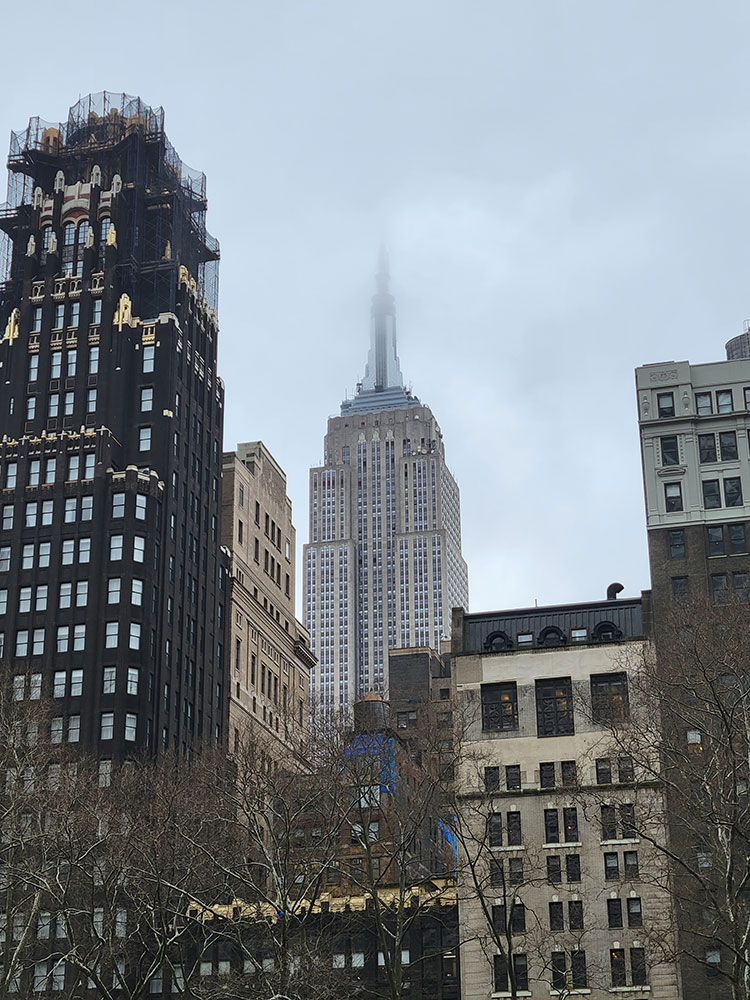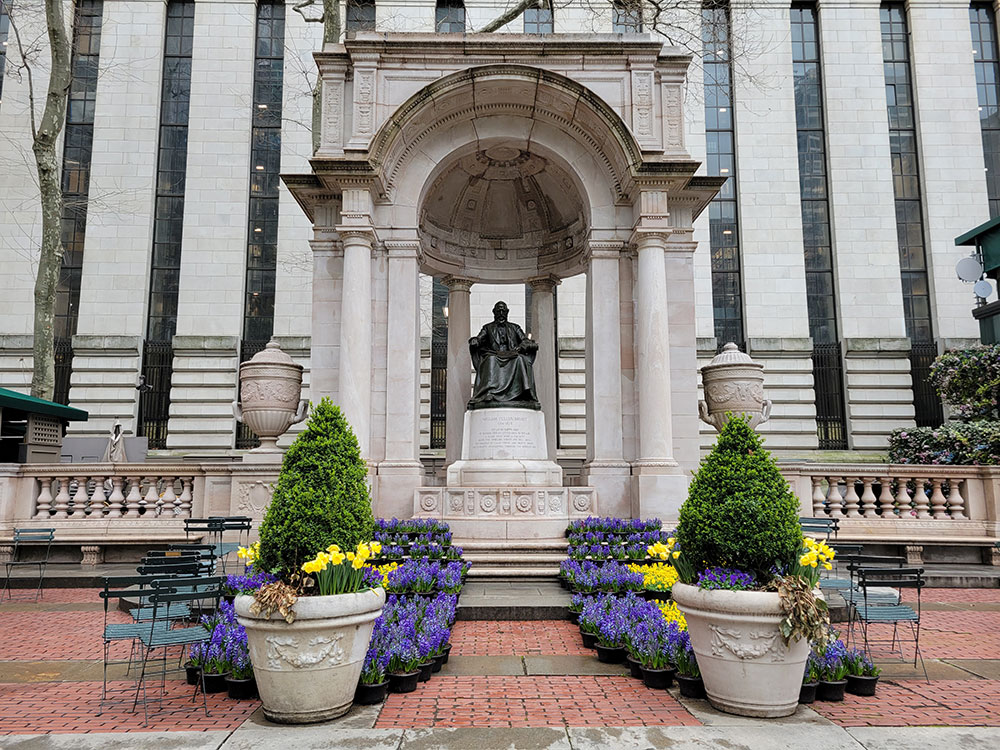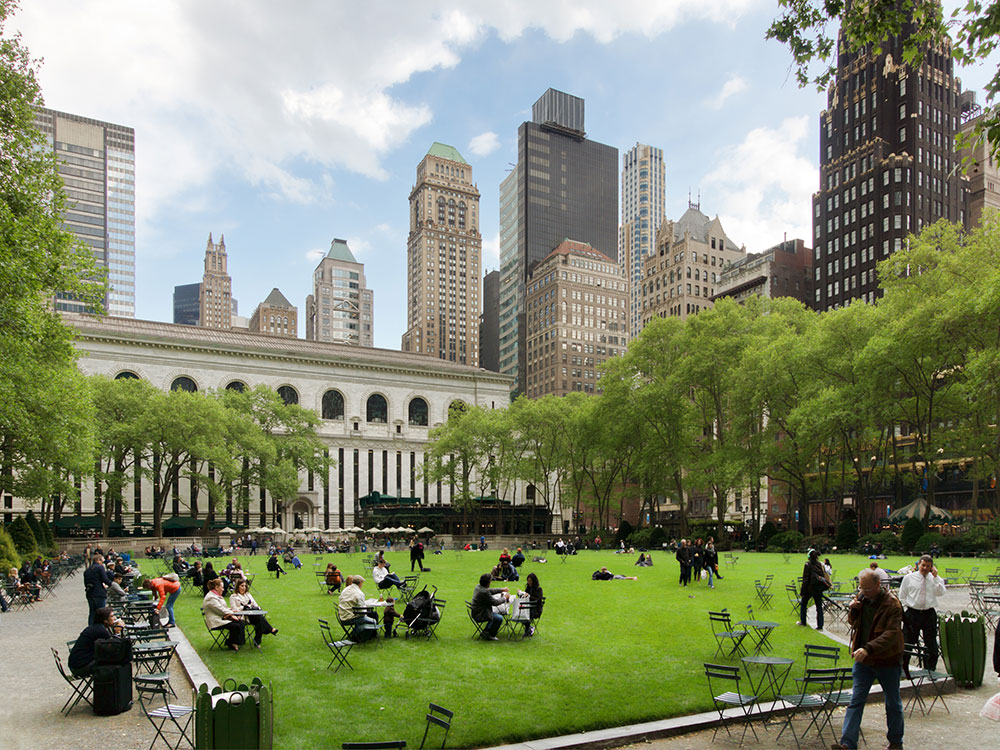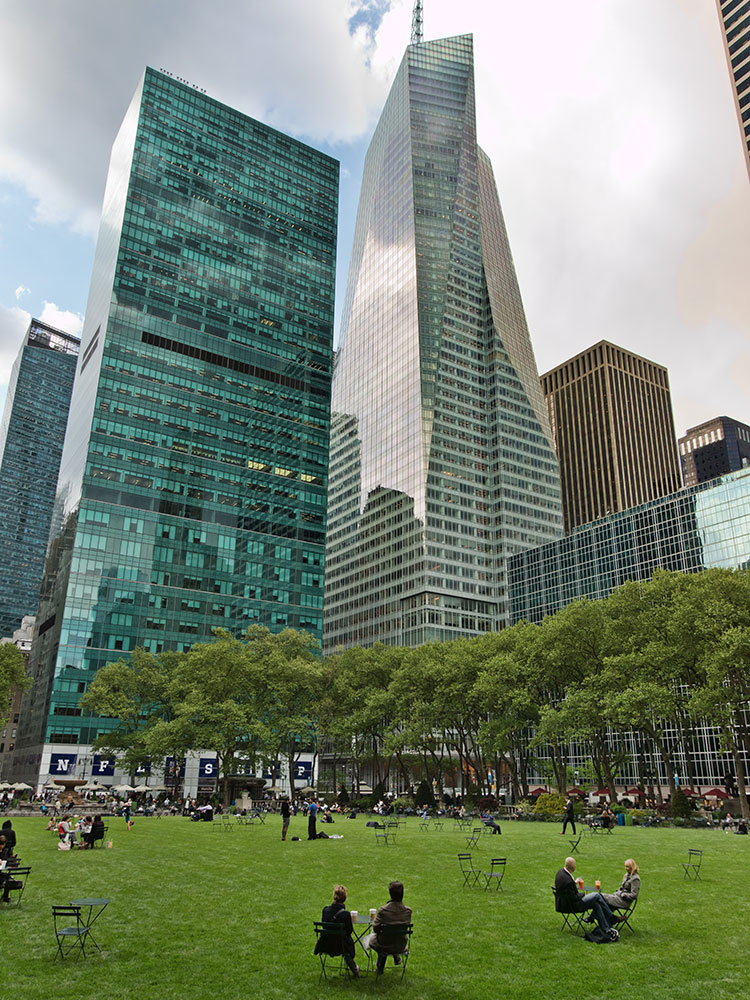9.6-acre (39,000 m2) public park in Midtown Manhattan where the eastern half is occupied by the Main Branch of the New York Public Library and the western half contains a lawn, shaded walkways, and amenities such as a carousel
General Information
Monday to Thursday: 7am to 10pm
Friday to Sunday: 7am to 11pm
During Kids Week: Open daily 7am to 11pm
March to May
Daily, 7am to 10pm
June to August
Daily, 7am to 11pm
September to November
Daily, 7am to 10pm
December
Monday to Thursday, 7am to 11pm
Friday to Sunday, 7am to 11:30pm
New Year’s Eve the park closes early
Bryant Park is a 9.6-acre (39,000 m2) public park located in the New York City borough of Manhattan. Privately managed, it is located between Fifth Avenue and Avenue of the Americas (Sixth Avenue) and between 40th and 42nd Streets in Midtown Manhattan. The eastern half of Bryant Park is occupied by the Main Branch of the New York Public Library. The western half, which contains a lawn, shaded walkways, and amenities such as a carousel, is located entirely over an underground structure that houses the library's stacks. The park hosts several events, including a seasonal "Winter Village" with an ice rink and shops during the winter.
The first park at the site was opened in 1847 and was called Reservoir Square due to its proximity to the Croton Distributing Reservoir. Reservoir Square contained the New York Crystal Palace, which hosted the Exhibition of the Industry of All Nations in 1853 and burned down in 1858. The square was renamed in 1884 for abolitionist and journalist William Cullen Bryant. The reservoir was demolished in 1900 and the New York Public Library's main branch was built on the site, opening in 1911. Bryant Park was rebuilt in 1933-1934 to a plan by Lusby Simpson. After a period of decline, it was restored in 1988-1992 by architecture firms Hanna/Olin Ltd. and Hardy Holzman Pfeiffer Associates, during which the park was rebuilt and the library's stacks were built underneath. Further improvements were made in the late 20th and early 21st centuries.

Though it is owned by the New York City Department of Parks and Recreation, Bryant Park is managed by the private not-for-profit organization Bryant Park Corporation, which was founded in 1980 and led the restoration of Bryant Park. The park is cited as a model for the success of public-private partnerships. The park is both a National Register of Historic Places listing and a New York City designated landmark.
Description
Bryant Park is located between Fifth and Sixth Avenues and between 40th and 42nd Street, and covers 9.6 acres (3.9 ha). Although technically the main branch of the New York Public Library is located within the park, in design it forms the eastern boundary of the park's green space, making Sixth Avenue the park's primary entrance. Bryant Park is used mostly as a passive recreation space, and lacks active sports facilities. Bryant Park is located several steps above the surrounding streets, and is enclosed throughout with a retaining wall. Granite stairs at several locations provide access from the surrounding sidewalks.
One of the park's largest features is a large lawn located slightly below the level of the surrounding walkways. Besides serving as a "lunchroom" for office workers, the lawn serves as the seating area for some of the park's major events, such as Bryant Park Movie Nights, Broadway in Bryant Park, and Square Dance. The lawn's season runs from February until October, when it is closed to make way for Bank of America Winter Village.

Numerous walkways surround the central lawn. The northern and southern sides are each flanked by two flagstone walkways. Each of these walkways is bordered by London plane trees (Platanus acerifolia), which contribute to the park's European feel. In addition, numerous statues are scattered throughout the park. One of the walkways contains a trapdoor, which conceals a power supply that is used to power the Winter Village. A raised terrace on the eastern side of the lawn, which dates to the construction of the library's main branch, is paved with gray flagstones and red brick. Its centerpiece is the William Cullen Bryant Memorial, which is raised on a pedestal of its own.
The migration of the city's elite uptown increased during the mid-19th century, and in 1855, Castle Garden was closed and made into the world's first immigration depot. The immigration center operated until 1890, just before the offshore immigration facility at Ellis Island opened. An estimated 7.7 million immigrants passed through the center during its operation. The structure then housed the New York Aquarium from 1896 to 1941, when it was closed as part of Triborough Bridge Authority commissioner Robert Moses's plans to build the Brooklyn-Battery Tunnel. Ultimately, Castle Clinton was preserved as part of a National Monument in 1946.
Today, Castle Clinton retains its original name and is managed by the National Park Service. It contains a small history exhibit and ticket booths for the ferries to the Statue of Liberty and Ellis Island; in addition, it occasionally hosts concerts. As the site of the ferry ticket office, it recorded nearly 4.08 million visitors in 2009. According to data from the National Park Service, the Statue of Liberty National Monument, which includes Castle Clinton, was the most popular national monument in the United States that year.
Memorials
Battery Park contains over 20 monuments, many of which are clustered in an area called "Monument Walk". Within the park is Hope Garden, a memorial dedicated to AIDS victims. The garden has also been used as a site for environmental demonstrations due to its fragility and the Battery's status as a tourist attraction.

The Netherlands flagpole was dedicated on December 6, 1926, as a gift from the Dutch in honor of the establishment of New Amsterdam three centuries prior. It was originally located south of Castle Clinton, but during the 1940-1952 renovation, the flagpole was relocated to the northeast entrance of the Battery, where it still stands. It was renovated and rededicated in 2000.
Engraved names
A World War II war memorial, the East Coast Memorial is one of three war memorials in the United States administered by the American Battle Monuments Commission. The memorial commemorates U.S. servicemen who died in coastal waters of the western Atlantic Ocean during the Battle of the Atlantic. A total of 4,609 names are inscribed on both sides of eight 19-foot-tall granite pylons. The pylons are arranged in two rows of four each. Between the two rows stands a bronze statue of an eagle, erected on a black granite pedestal. The eagle faces the Statue of Liberty in New York Harbor.
The American Merchant Mariners' Memorial sculpture, located in the Hudson River west of the park, is sited on a stone breakwater just south of Pier A and connected to the pier by a dock. It was designed by the sculptor Marisol Escobar and dedicated in 1991. The bronze sculpture depicts four merchant seamen with their sinking vessel after it had been attacked by a U-boat during World War II. One of the seamen is in the water, and is covered by the sea with each high tide. The sculpture is loosely based on a real photograph of crewmen of the SS Muskogee that was taken by the commander of an attacking submarine, all of whom died at sea The memorial was commissioned by the American Merchant Mariners' Memorial, Inc.
Other Memorials
The park also contains several other memorials, including:
The Immigrants (1983, rededicated 2005) - Located south of Castle Clinton, this statue by Luis Sanguino depicts multiple types of immigrants that would have passed through Castle Clinton in the late 19th century.
Korean War Memorial (1991) - Located at Battery Place just northeast of Castle Clinton and designed by Mac Adams, it is a black granite obelisk dedicated to veterans of the Korean War. It was intended as one of the United States' first Korean War memorials.
John Ericsson statue (1903) - Located near the center of the park, the statue was designed by Jonathan Scott Hartley. It commemorates Ericsson, a designer and innovator of ironclad warships, and depicts him holding a model of the USS Monitor.
Walloon Settlers Memorial (1924) - Located at Battery Place, the memorial was designed by Henry Bacon. The monument is a stele dedicated to Jessé de Forest for his contributions to the founding of New York City.
Giovanni da Verrazzano (1909) - Located at Battery Place, the memorial was designed by Ettore Ximenes. It is a statue of Verrazzano, the first European to sail into New York Harbor, on a pedestal.
World War II Coast Guard Memorial (1955) - Located at the extreme southeast end of Battery Park, this memorial was designed by Norman M. Thomas and depicts three figures on a pedestal.
Wireless Operators Memorial (1915, rededicated 1952) - Located near the center of the park, the monument consists of a cenotaph commemorating wireless telegraph operators who went down with their ships.
This article uses material from the Wikipedia article "Bryant Park", which is released under the Creative Commons Attribution-Share-Alike License 3.0
 Jean-Christophe BENOIST, CC BY 3.0, via Wikimedia Commons; Image Size Adjusted
Jean-Christophe BENOIST, CC BY 3.0, via Wikimedia Commons; Image Size Adjusted Jean-Christophe BENOIST, CC BY 3.0, via Wikimedia Commons; Image Size Adjusted
Jean-Christophe BENOIST, CC BY 3.0, via Wikimedia Commons; Image Size Adjusted